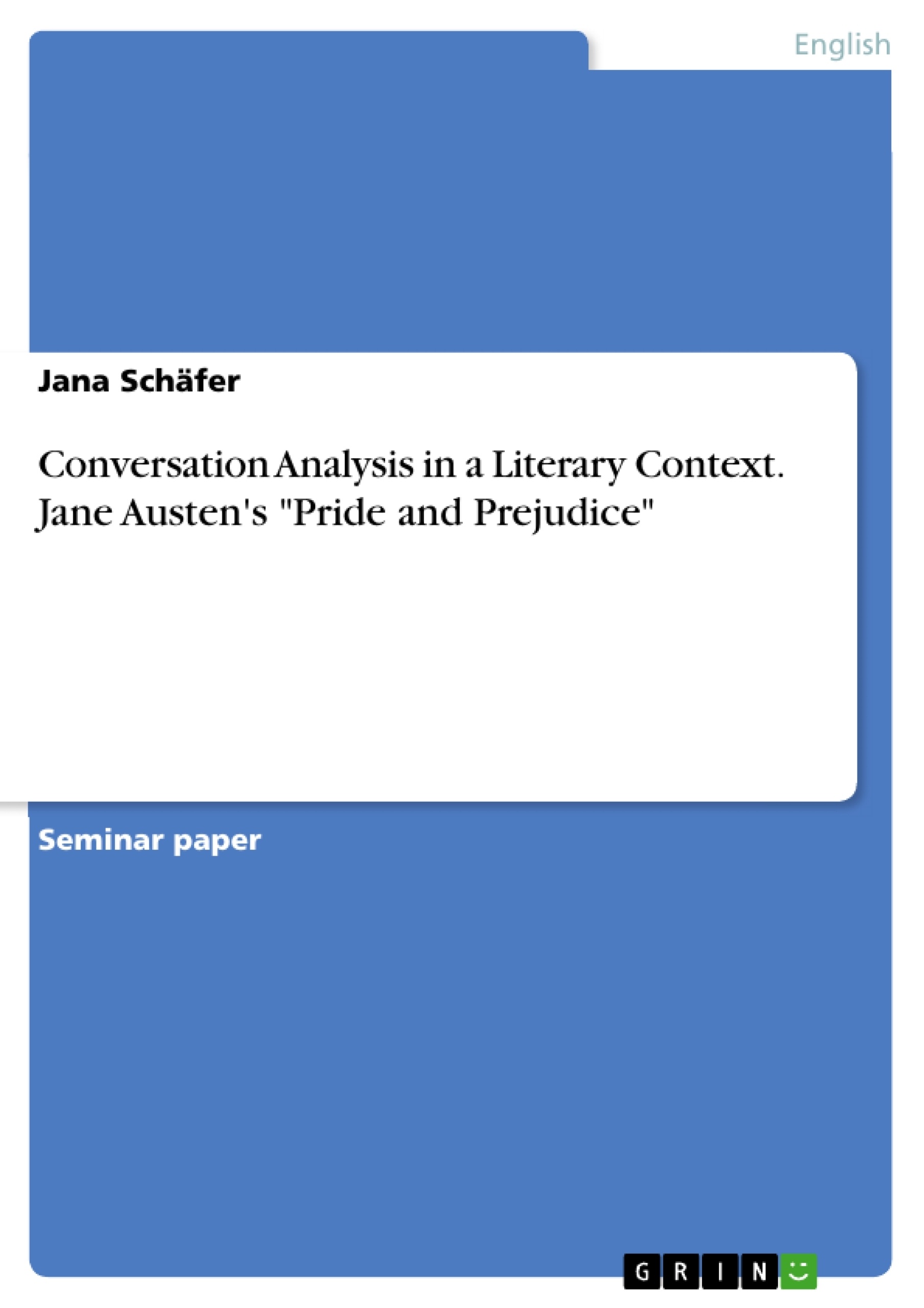Conversation analysis is one of the central elements in pragmatics. After introducing several pragmatics basics like the pragmatics principles it is important to relate them to a whole conversation. Since utterances do not occur alone but always within a conversation, they need to be analysed as unit. Regarding that, pragmatics wants to study language in use, whereby use is always conversation and communication. However, there is also a close connection to discourse analysis which includes power relations in institutional conversations, feminist analysis as well as literary studies. The interface of all these fields constitutes itself out of communication, of language in use.
Therefore, the structure of this paper will be divided into two parts: the first one establishes the theoretical background with important terms for conversation analysis. Depending on the author, there are always slightly different aspects highlighted which will be summarized in that part to share the same background. Secondly, these tools will be applied to a literary text where especially the addition to a textual interpretation is shown. Taking "Pride and Prejudice" by Jane Austen as the literary example, the attempt is to use a well-known text which concentrates mainly on accurate description of the real world. However, the tool of conversation analysis might be an addition to other interpretation and proves therefore as a interdisciplinary idea.
Table of Contents
- Introduction
- Theoretical background: From form to content
- Case study: Conversation analysis in literary texts
- Pride and Prejudice by Jane Austen
- Conclusion
Objectives and Key Themes
This paper examines conversation analysis as a tool for interpreting literary texts. It aims to demonstrate how this method can be applied to a well-known novel, Pride and Prejudice by Jane Austen, to reveal insights into the characters' interactions and the social dynamics of the time period.
- Conversation analysis as a tool for literary interpretation
- The role of conversation in shaping character and plot
- The relationship between language, social context, and power dynamics
- The application of conversation analysis to a specific literary text (Pride and Prejudice)
Chapter Summaries
The first chapter introduces the concept of conversation analysis and its place within pragmatics. The focus is on how conversation analysis differs from other approaches to language study and how it can be applied to real-world communication. The second chapter delves into the theoretical background of conversation analysis, exploring key terms and concepts such as turn-taking, adjacency pairs, and transition relevance places. The third chapter presents a case study of conversation analysis in a literary context, using Pride and Prejudice as an example. This chapter examines how conversation analysis can be used to understand the characters' interactions and the social dynamics of the novel.
Keywords
Conversation analysis, pragmatics, literary interpretation, Pride and Prejudice, Jane Austen, turn-taking, adjacency pairs, transition relevance places, social dynamics, power structures.
- Citation du texte
- Jana Schäfer (Auteur), 2015, Conversation Analysis in a Literary Context. Jane Austen's "Pride and Prejudice", Munich, GRIN Verlag, https://www.grin.com/document/316576



